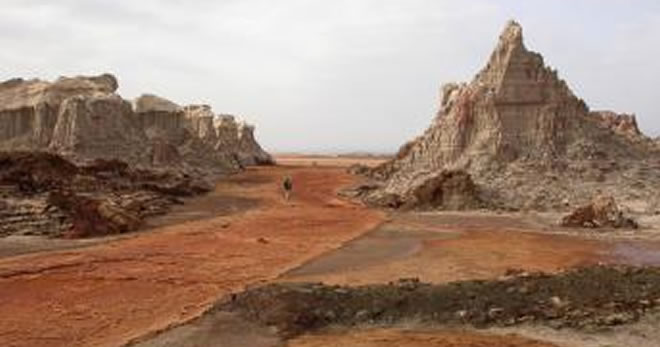By Clea Broadhurst
Monday, October 12, 2015

Recent figures reveal that the number of Ethiopians in need of food has risen sharply because of the lack of rain, combined with the El Nino weather phenomenon. In August, the United Nations said 4.5 million were in need - today, it is at least 7.5 million.
Food insecurity is a sensitive issue in Ethiopia ever since the country was hit by famine in 1984-85 after extreme drought.
The problem today is that the drought is affecting a large area - from the eastern Afar region to the southern Somali regions - which is an area that is already quite dry.
"One factor of the crisis is that it's a region that normally thrives on pastoral activities, and because of the drought, livestocks are also dying," Ahmed Shukri, a senior economist with the UN's Food and Agriculture Organization told RFI.
"The situation from now on needs to be closely followed, because this is the time of the year when food prices are going up, although it is still below last year's figures, they have started to go up, while prices of livestock have started to go down."
The government has been sending food and water, but still refuses to speak about it in detail. On top of that, the press doesn't have access to the worse-hit areas either.
"The Ethiopian government having established what is generally considered to be quite an efficient system for controling the effects of drought and malnutrition is probably embarrassed and surprised that such a serious issue has arisen," Christopher Clapham, a professor specialised in the region at Cambridge university, told RFI.
"The Ethiopian government has been obsessed with its program of economic development, which in turn has concentrated heavily on the parts of Ethiopia with the largest population, especially the major cities and major agricultural areas, so it could be the case that areas such as eastern Afar and southern Somali have been neglected."
Clapham points out that these areas are bordering Somalia, with the problems of Al-Shabaab, and the high level of lawlessness, as well as sharing borders with Erytrea and Djibouti, very inaccessible.
So far, Ethiopia's government has mobilised $33 million in emergency aid, but the UN says it needs $237 million.
Combined with these issues, a new study using a sediment core extracted from the Gulf of Aden reveals that the East African region covering Somalia, Djibouti and Ethiopia has dried at an unusually fast rate over the past century.
The study's co-author Peter deMenocal, of Columbia University's Earth Observatory, says that many aid groups are expecting "a wetter, greener future for the Horn of Africa". But their new findings actually show that "the exact opposite is occurring."
"Things are going to continue getting drier and more difficult there, just as we have seen in Syria, and parts of Northern Africa, there might be climate refugees attached to this as well because the land becomes unsustainable for them, even with pretty major aids," he told RFI.
"The year to year variations are large and those are linked to El Nino, which is a completely natural phenomenon, it's not a man-made process, so there can be wetter years and drier years. But superimposed on that is this long-term trend toward increasingly drier conditions, and that is man-made. The expectation is that Ethiopia will continue to see more challenging conditions with the years ahead."
And if the region becomes drier and drier, like the authors of the study think it might get, they believe that this will completely change models for food security and agriculture in the region.